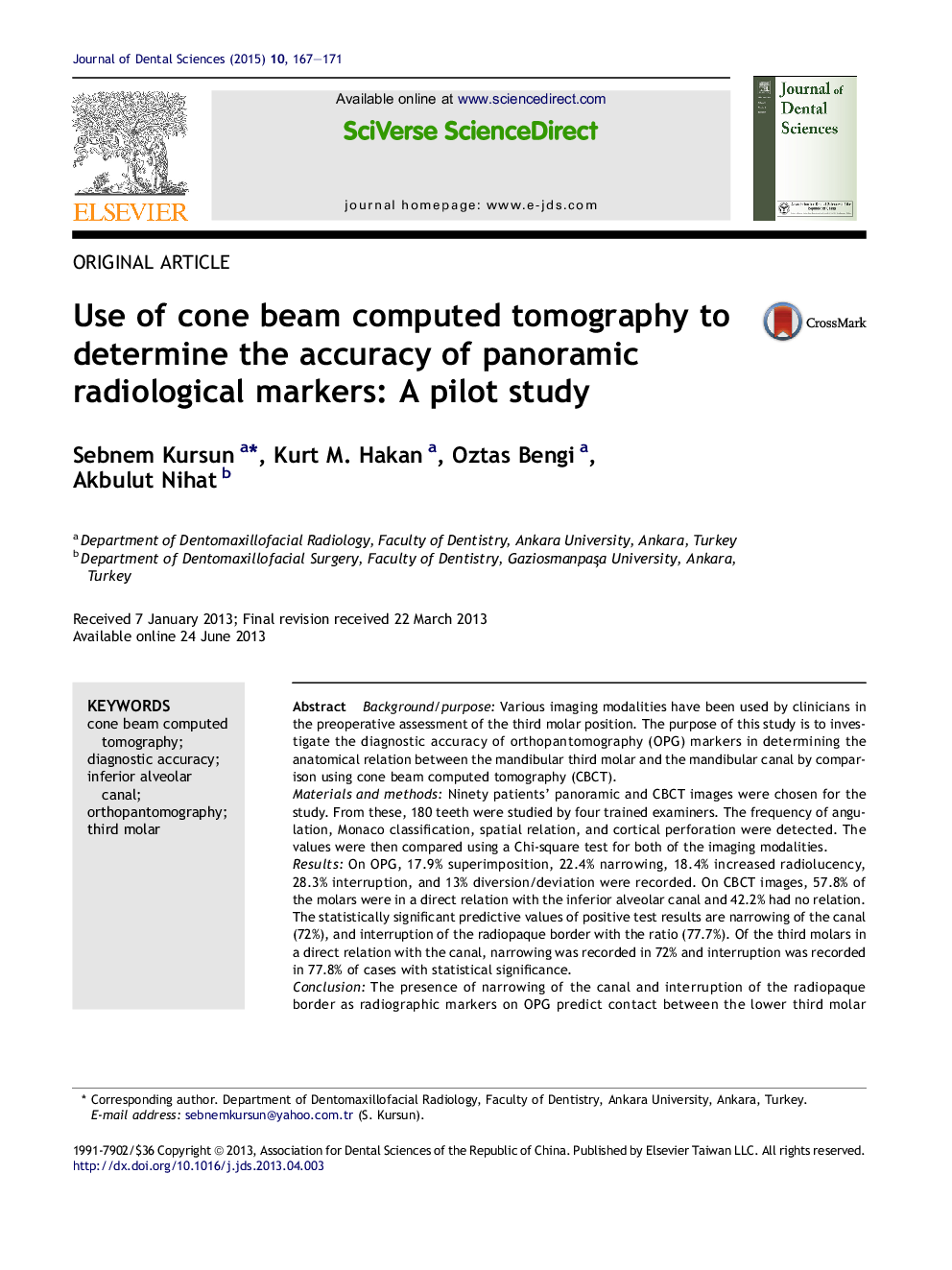| Article ID | Journal | Published Year | Pages | File Type |
|---|---|---|---|---|
| 3144579 | Journal of Dental Sciences | 2015 | 5 Pages |
Background/purposeVarious imaging modalities have been used by clinicians in the preoperative assessment of the third molar position. The purpose of this study is to investigate the diagnostic accuracy of orthopantomography (OPG) markers in determining the anatomical relation between the mandibular third molar and the mandibular canal by comparison using cone beam computed tomography (CBCT).Materials and methodsNinety patients' panoramic and CBCT images were chosen for the study. From these, 180 teeth were studied by four trained examiners. The frequency of angulation, Monaco classification, spatial relation, and cortical perforation were detected. The values were then compared using a Chi-square test for both of the imaging modalities.ResultsOn OPG, 17.9% superimposition, 22.4% narrowing, 18.4% increased radiolucency, 28.3% interruption, and 13% diversion/deviation were recorded. On CBCT images, 57.8% of the molars were in a direct relation with the inferior alveolar canal and 42.2% had no relation. The statistically significant predictive values of positive test results are narrowing of the canal (72%), and interruption of the radiopaque border with the ratio (77.7%). Of the third molars in a direct relation with the canal, narrowing was recorded in 72% and interruption was recorded in 77.8% of cases with statistical significance.ConclusionThe presence of narrowing of the canal and interruption of the radiopaque border as radiographic markers on OPG predict contact between the lower third molar and inferior alveolar canal. Detailed radiological examination on CBCT is recommended in such cases.
